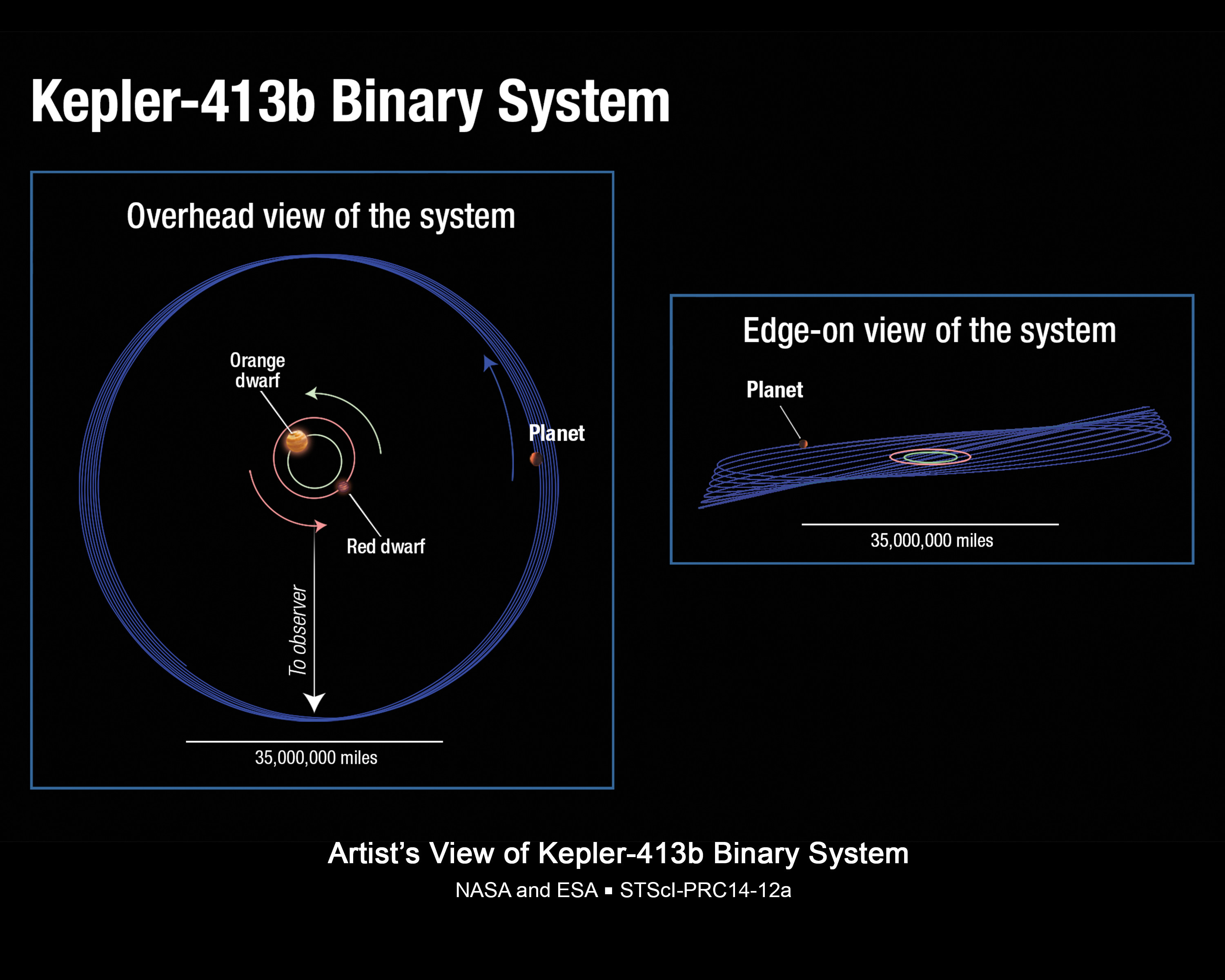We’re lucky to live on a planet where it’s predictably warmer in the summer and colder in the winter in many regions, at least within a certain range. On Kepler-413b, it’s a world where you’d have to check the forecast more frequently, because its axis swings by a wild 30 degrees every 11 years. On Earth, by comparison, it takes 26,000 years to tilt by a somewhat lesser amount (23.5 degrees).
The exoplanet, which is 2,300 light-years away in the constellation Cygnus, orbits two dwarf stars — an orange one and a red one — every 66 days. While it would be fun to imagine a weather forecast on this planet, in reality it’s likely too hot for life (it’s close to its parent stars) and also huge, at 65 Earth-masses or a “super-Neptune.”
What’s even weirder is how hard it was to characterize the planet. Normally, astronomers spot these worlds either by watching them go across the face of their parent star(s), or by the gravitational wobbles they induce in those stars. The orbit, however, is tilted 2.5 degrees to the stars, which makes the transits far more unpredictable. It took several years of Kepler space telescope data to find a pattern.
“What we see in the Kepler data over 1,500 days is three transits in the first 180 days (one transit every 66 days), then we had 800 days with no transits at all,” stated Veselin Kostov, the principal investigator on the observation. “After that, we saw five more transits in a row,” added Kostov, who works both with the the Space Telescope Science Institute and Johns Hopkins University in Baltimore, Md.
It will be an astounding six years until the next transit happens in 2020, partly because of that wobble and partly because the stars have small diameters and aren’t exactly “edge-on” to our view from Earth. As for why this planet is behaving the way it does, no one is sure. Maybe other planets are messing with the orbit, or a third star is doing the same thing.
The next major question, the astronomers added, is if there are other planets out there like this that we just can’t see because of the gap between transit periods.
You can read more about this finding in The Astrophysical Journal (a Jan. 29 publication that doesn’t appear to be on the website yet) or in preprint version on Arxiv.


“On Earth, by comparison, it takes 26,000 years to tilt by a somewhat lesser amount (23.5 degrees).”
No. Earth’s axis ROTATES (precesses) in 26,000 yrs. The tilt remains more or less the same.
Does this planet’s axis precess Earth-like only faster, or does the tilt actually change?
Is it the orbit’s axis that is being referred to? The graphic seems to support that. I imagine that figuring out the rotational axis of a planet at that distance would be difficult.
The orbital plane and planet’s obliquity are both precessing. The obliquity precession has not been observed but inferred from the expected torquing from the stars. Mind you, the paper does point out that they expect that obliquity precession could be observed!